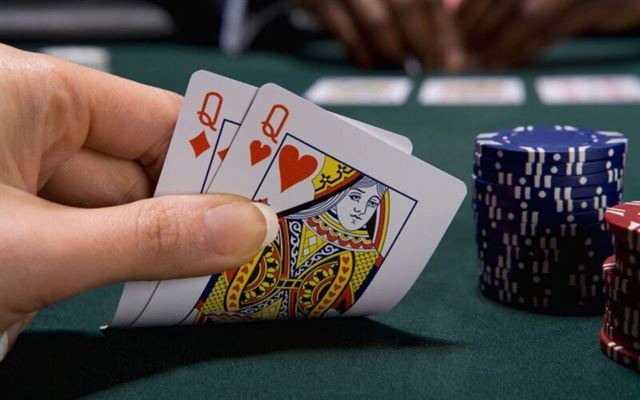“Royal Flush Dreams: A Comprehensive Guide to Mastering Poker Hands” is a comprehensive and informative guide that delves into the world of poker hands. This guide is designed to help both beginners and experienced players understand and master the various poker hand rankings, with a particular focus on the coveted royal flush. Whether you’re looking to improve your poker skills or simply gain a deeper understanding of the game, this guide provides valuable insights, strategies, and tips to enhance your gameplay and increase your chances of achieving that elusive royal flush.
The History and Evolution of Poker Hands in Casinos
The origins of poker can be traced back to the early 19th century in the United States. As the game gained popularity, players began to develop a standardized ranking system for hands. This system laid the foundation for the modern poker hands we use today. Initially, the ranking system consisted of just five hands, with the highest being a royal flush and the lowest a high card.
As poker spread across the country, different variations of the game emerged, each with its own unique set of hands. In the mid-19th century, the concept of a straight was introduced, adding another layer of complexity to the game. A straight is a hand where all five cards are in sequential order, regardless of their suit. This new addition brought a fresh dynamic to the game, as players now had to consider the possibility of a straight when making their bets.
The late 19th century saw the introduction of the flush, a hand where all five cards are of the same suit but not in sequential order. This further expanded the range of possible hands and increased the excitement of the game. With the addition of the flush, players had to be even more strategic in their decision-making, as the chances of someone having a strong hand increased.
In the early 20th century, the concept of a full house was introduced, which consists of three cards of the same rank and two cards of another rank. This hand added yet another layer of complexity to the game, as players now had to consider the possibility of a full house when making their bets. The full house quickly became one of the most sought-after hands, as it offered a strong chance of winning the pot.
As the popularity of poker continued to grow, so did the variety of hands. The mid-20th century saw the introduction of the four of a kind, a hand consisting of four cards of the same rank and one unrelated card. This hand further increased the excitement of the game, as players now had to consider the possibility of someone having four of a kind when making their bets.
Finally, in the late 20th century, the concept of a straight flush was introduced. A straight flush is a hand where all five cards are in sequential order and of the same suit. This hand became the second-highest ranking hand in poker, just below the elusive royal flush. The introduction of the straight flush added a new level of excitement to the game, as players now had to consider the possibility of someone having a straight flush when making their bets.
Essential Strategies for Mastering Poker Hands in Casino Games
First and foremost, it is crucial to understand the hierarchy of poker hands. The highest-ranking hand is the royal flush, which consists of the Ace, King, Queen, Jack, and Ten of the same suit. This is followed by a straight flush, which is any five cards of the same suit in numerical order. The next highest hand is four of a kind, which is four cards of the same rank, followed by a full house, which is three of a kind plus a pair.
Moving down the hierarchy, we have a flush, which is any five cards of the same suit, but not in numerical order. A straight is next, which is any five cards in numerical order, regardless of their suit. Three of a kind comes after that, which is three cards of the same rank, followed by two pairs, which is, as the name suggests, two pairs of cards of the same rank.
Continuing down the list, we have one pair, which is two cards of the same rank, and finally, the lowest-ranking hand is a high card, which is when no other hand is made. Understanding the hierarchy of poker hands is the foundation of your success in the game.
Now that you have a good grasp of the different poker hands, let’s delve into some essential strategies for mastering them. One crucial strategy is to pay close attention to the community cards on the table. These are the cards that all players can use to make their best hand. By carefully observing these cards and considering how they might improve your hand, you can make more informed decisions during the game.
Another important strategy is to be aware of your opponents’ betting patterns. Pay attention to how they bet and what hands they show at the showdown. This information can give you valuable insights into their playing style and help you make better decisions when it comes to betting or folding.
Furthermore, it is crucial to manage your bankroll effectively. Set a budget for yourself and stick to it. Avoid chasing losses and know when to walk away. By managing your bankroll wisely, you can ensure that you have enough funds to continue playing and increase your chances of winning in the long run.
Lastly, practice makes perfect. The more you play and familiarize yourself with different poker hands, the better you will become at recognizing them and making the right decisions. Take advantage of online poker platforms or friendly games with friends to hone your skills and gain experience.
Analyzing the Odds: How to Calculate Probabilities in Poker Hands
Before we dive into the calculations, it is important to understand the basics of poker hands. A standard deck of 52 cards is used, and the goal is to create the best possible hand from the cards dealt. The hierarchy of hands, from highest to lowest, is as follows: Royal Flush, Straight Flush, Four of a Kind, Full House, Flush, Straight, Three of a Kind, Two Pair, One Pair, and High Card.
To calculate the probability of obtaining a specific hand, we need to consider the number of possible outcomes and the number of favorable outcomes. Let’s start with the most coveted hand in poker – the Royal Flush. A Royal Flush consists of the Ace, King, Queen, Jack, and Ten of the same suit. Since there are four suits in a deck, the probability of getting a Royal Flush is 4 divided by the total number of possible hands, which is 2,598,960. This gives us a probability of approximately 0.000154%.
Moving on to the Straight Flush, which is any five consecutive cards of the same suit. The number of possible Straight Flushes is 40, as there are 10 possible starting cards (Ace through Ten) and four suits. The total number of possible hands remains the same, so the probability of getting a Straight Flush is 40 divided by 2,598,960, which is roughly 0.00154%.
Next, let’s consider Four of a Kind, which consists of four cards of the same rank and one unmatched card. There are 13 ranks in a deck, so the number of possible Four of a Kind hands is 13. The fifth card can be any of the remaining 48 cards in the deck. Therefore, the probability of getting Four of a Kind is 13 multiplied by 48, divided by 2,598,960, resulting in a probability of approximately 0.024%.
Moving down the hierarchy, we come to Full House, which is a combination of Three of a Kind and a Pair. To calculate the probability of getting a Full House, we need to consider the number of possible Three of a Kind hands and the number of possible Pair hands. There are 13 ranks to choose from for the Three of a Kind, and once we have chosen the rank, there are 4 cards of that rank in the deck. For the Pair, we have 12 remaining ranks to choose from, and once we have chosen the rank, there are 4 cards of that rank in the deck. Therefore, the probability of getting a Full House is (13 * 4) * (12 * 4) divided by 2,598,960, which is approximately 0.144%.
As we move further down the hierarchy, the calculations become more complex. However, by understanding the basic principles of calculating probabilities in poker hands, you can gain a significant advantage at the poker table. Remember, poker is a game of skill, and analyzing the odds is a crucial part of developing your strategy.
Tips and Tricks for Improving Your Poker Hand Skills in Casino Tournaments
First and foremost, it’s crucial to understand the hierarchy of poker hands. The highest-ranking hand is the Royal Flush, consisting of the Ace, King, Queen, Jack, and Ten of the same suit. This hand is extremely rare but guarantees a win if you’re lucky enough to have it. Following the Royal Flush is the Straight Flush, which is any five consecutive cards of the same suit. This hand is also quite rare but holds significant value in poker tournaments.
Moving down the hierarchy, we have the Four of a Kind, which consists of four cards of the same rank and one unmatched card, such as four Aces and a King. This hand is powerful and can often lead to victory. Next is the Full House, which is a combination of three cards of the same rank and two cards of another rank. For example, three Queens and two Kings. The Full House is a strong hand that can give you an edge over your opponents.
The Flush is another valuable hand, consisting of any five cards of the same suit, not in consecutive order. This hand can be quite common in poker tournaments and can lead to significant wins if played strategically. Following the Flush is the Straight, which is any five consecutive cards of different suits. This hand is also relatively common and can be a game-changer if played wisely.
Moving further down the hierarchy, we have the Three of a Kind, which consists of three cards of the same rank and two unmatched cards. This hand can be powerful if the three matching cards are high-ranking. Next is the Two Pair, which is a combination of two cards of the same rank, another two cards of the same rank, and one unmatched card. This hand can be tricky to play, but with the right strategy, it can lead to success.
The One Pair is a hand that consists of two cards of the same rank and three unmatched cards. This hand is relatively common in poker tournaments and can be valuable if the pair is high-ranking. Finally, we have the High Card, which is the lowest-ranking hand in poker. This hand consists of five unmatched cards, and the highest card determines its value. The High Card is often a weak hand but can still win if played strategically.
To improve your poker hand skills in casino tournaments, it’s essential to practice regularly and study the game. Familiarize yourself with the different poker hands and their rankings, and learn how to calculate the odds of getting certain hands. Additionally, observe experienced players and analyze their strategies to gain insights into effective gameplay.
Furthermore, it’s crucial to manage your bankroll wisely and avoid taking unnecessary risks. Set a budget for each tournament and stick to it, as this will help you avoid significant losses. Additionally, be patient and disciplined during gameplay, as impulsive decisions can lead to unfavorable outcomes.
In conclusion, mastering the different poker hands is essential for success in casino tournaments. By understanding the hierarchy of hands and practicing regularly, you can improve your poker hand skills and increase your chances of winning. Remember to play strategically, manage your bankroll wisely, and observe experienced players to enhance your gameplay. With dedication and perseverance, you can become a formidable poker player and achieve your royal flush dreams.






